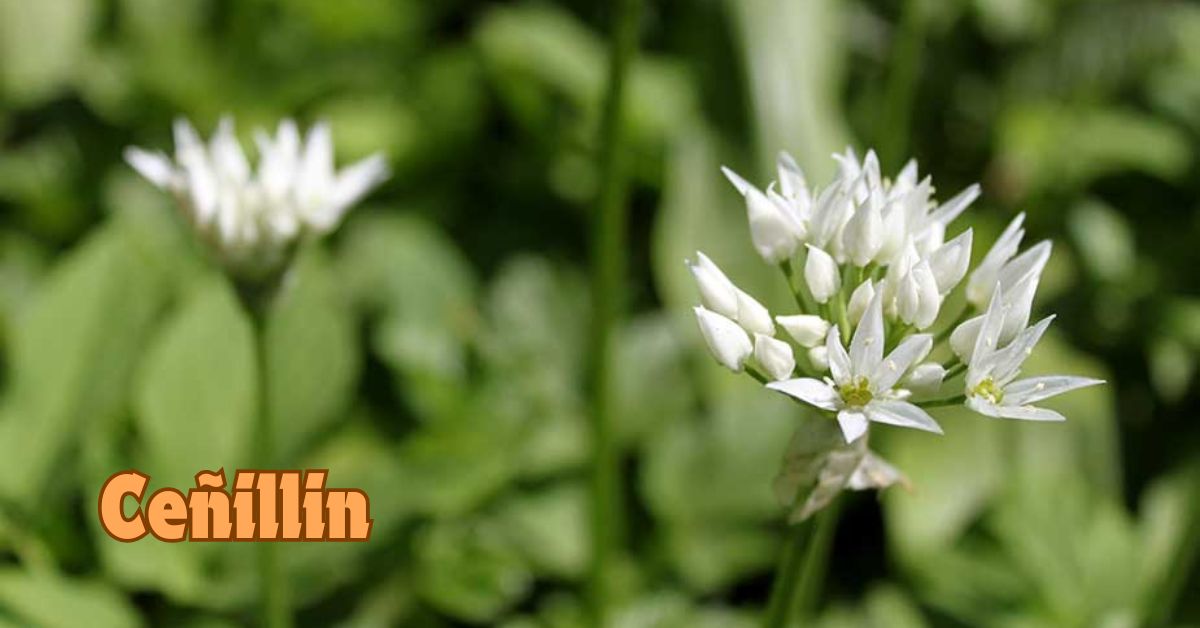Ceñillin, also known as wild garlic or ramsons, is a member of the Allium family that has been used by humans for thousands of years. Here are some key points about this versatile plant.
Identification and Habitat
Ceñillin is a perennial herb with flat, elliptical leaves and small, white flowers that bloom in clusters. It grows in deciduous woodlands with moist, slightly acidic soils, often alongside bluebells. Ceñillin is considered an ancient woodland indicator species, so its presence can signify a rare and special habitat.
Historical and Cultural Significance
Evidence of human use of ceñillin dates back to the late Mesolithic period in Denmark, where charred remnants of bulbs were found at a settlement. The ancient Greeks referred to it as “bear’s onion”, and in many European languages, its name translates to “bear garlic” or “bear leek”. This reflects the plant’s importance in folk traditions, where bears were seen as wise “medicine animals” whose food choices humans would emulate.
Culinary Uses
All parts of the ceñillin plant are edible, including the leaves, bulbs, and flowers. The leaves are the most commonly used part, with a subtle garlicky flavor. They can be eaten raw in salads, used as an herb, or cooked as a vegetable. The leaves can also be used to make pesto, garlic butter, or a sauce for pasta. The bulbs can be used similarly to garlic cloves, and the flowers are edible and can garnish salads.
Medicinal Properties
Ceñillin has been credited with many medicinal qualities and is a popular homeopathic ingredient. It is often used to treat cardiovascular, respiratory, and digestive problems, as well as for wound sterilization. The leaves contain high levels of minerals like magnesium, earning it the nickname “magnesium king” of plants.
Other Uses
In addition to its culinary and medicinal uses, ceñillin has a few unique applications:
- Natural dye: The leaves can create a natural, green dye for fabrics, paper, or food.
- Insect repellent: The strong aroma can help deter pests in gardens.
- Floral arrangements: The delicate white flowers pair well with other spring blooms.
- Companion plant: In gardens, ceñillin can attract beneficial insects and deter pests from other vegetables.
Foraging and Conservation
Ceñillin is common and widespread across much of Europe, from Ireland to the Caucasus. However, as an ancient woodland indicator, its presence can signify a rare habitat. When foraging for ceñillin, it’s essential to ensure proper identification and avoid any toxic lookalikes like lily-of-the-valley. Sustainable harvesting practices are crucial to conserve this important plant.
Conclusion
Ceñillin is a fascinating plant with a rich history, versatile uses, and ecological significance. Its culinary and medicinal properties have made it a valuable resource for humans for millennia, while its role as an ancient woodland indicator highlights the importance of preserving the habitats it calls home.
FAQs
What is Ceñillin?
Ceñillin, also known as wild garlic, is a perennial herb native to parts of Europe and Asia. It belongs to the Allium genus, which includes garlic, onions, and leeks. The plant features flat, elliptical leaves and small, white flowers that bloom in clusters.
What are the benefits of Ceñillin?
Ceñi-llin is rich in various nutrients, including vitamins A, C, and B6, as well as minerals such as iron, calcium, and magnesium. It also contains sulfur compounds that give it a distinctive aroma and flavor. Some studies suggest that ceñi-llin may have antioxidant and anti-inflammatory properties.
How can one use Ceñillin?
Ceñi-llin is a versatile ingredient in the kitchen. One can use the leaves to add flavor to soups, stews, and sauces. The flowers are also edible and can add a decorative touch to salads. Some people also use ceñi-llin to make pesto or infuse it in oils and vinegars.
Are there any precautions to take with Ceñillin?
While ceñi-llin is generally safe to consume, some people may experience allergic reactions or digestive discomfort. It’s essential to wash the leaves thoroughly before use and avoid consuming large quantities, especially if pregnant or breastfeeding. Those with thyroid disorders or taking blood-thinning medications should consult with a healthcare professional before incorporating ceñillin into their diet.
Where can one find Ceñillin?
Ceñi-llin grows wild in many parts of Europe and Asia, often in moist, shady areas. Some people may be able to forage for it in their local parks or forests. However, it’s crucial to ensure that the plant is correctly identified and not confused with any toxic lookalikes. Ceñi-llin is also available in some specialty grocery stores or online retailers.










